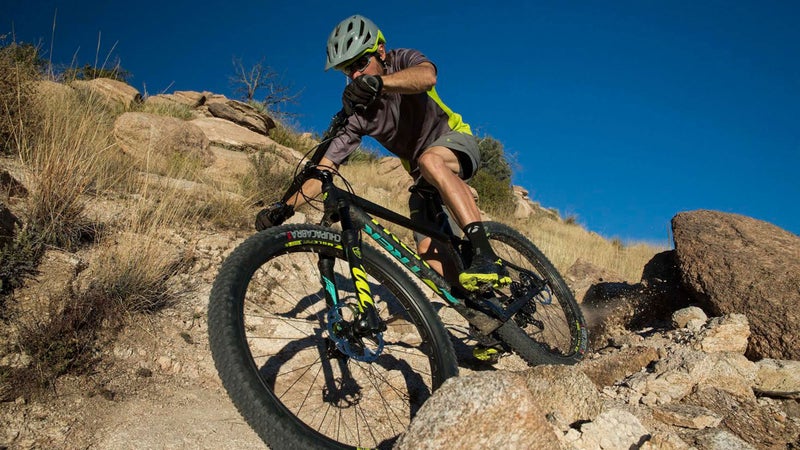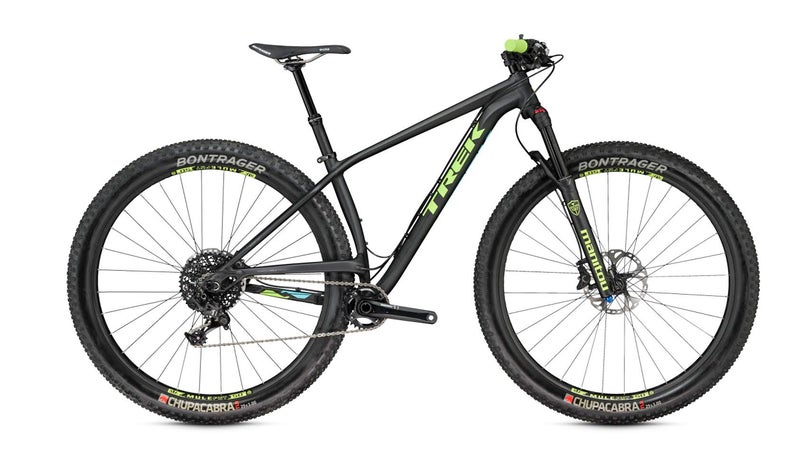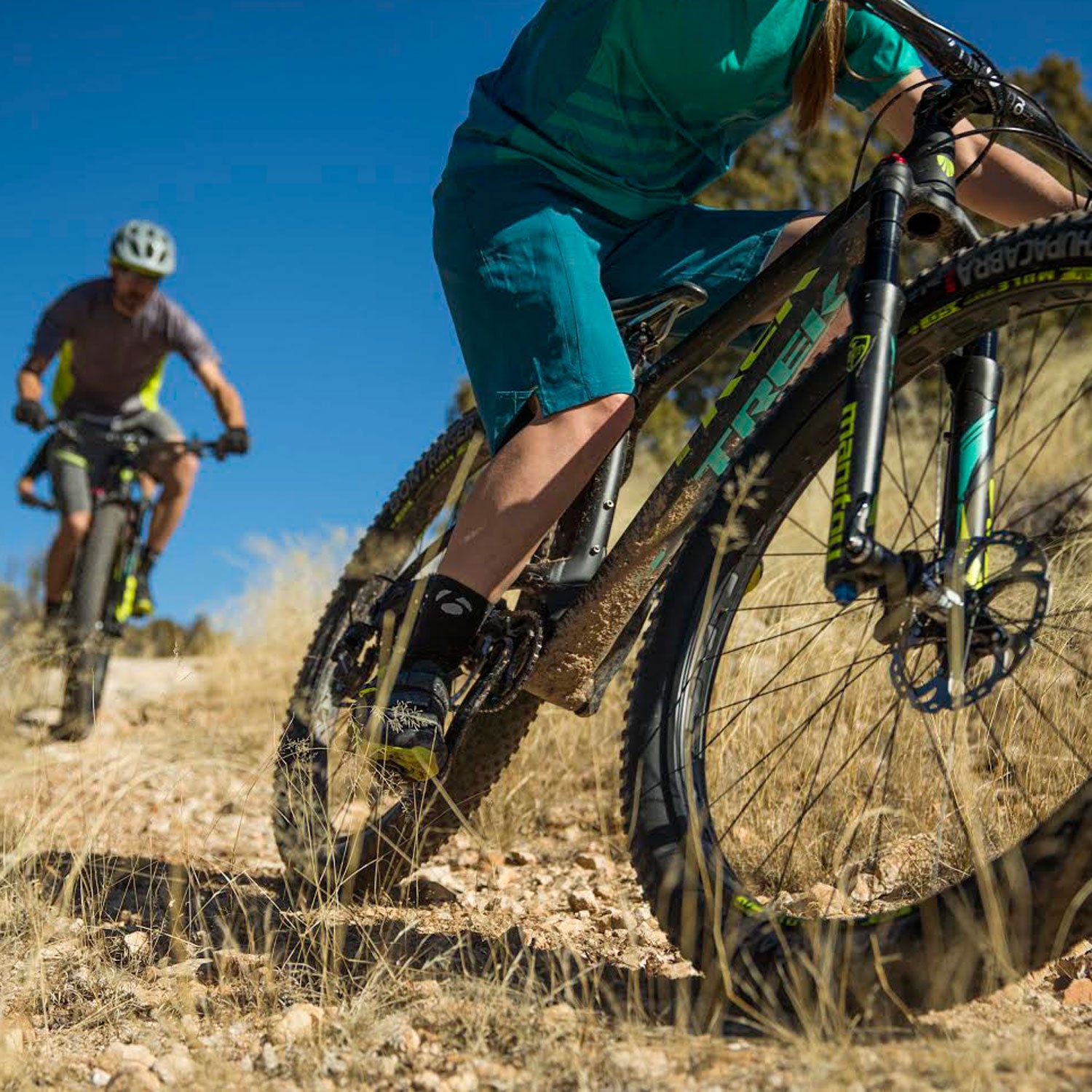The flavor of the week in mountain bikes is 27.5+, with a handful of companies debuting bikes built around the new size at Sea Otter last week. And rumors of more such bikes keep surfacing.
The sell on this new size is the ability to run decreased tire pressures, which results in increased traction and control. Of course, we already had a standard that offered all of that—it’s called 29+. We’ve loved every 29+ we’ve ridden, so why the abrupt switch toward 27.5+?
Over the last year, as I began hearing about the new size and grilling manufacturers over why they don’t just stick with the 29+ format, most have alluded to the difficulties that the extra dimensions and weight pose. Rocky Mountain put it like this: “We needed a low-pressure, high-volume tire that didn’t exceed traditional 29er outer diameters…The [27.5+] outer diameter allowed us to design the Sherpa with proper full suspension in a full range of sizes.”
To paraphrase: it’s tricky to fit in all the bike’s bits and pieces and keep the ride quick and fun and light when the wheels get too big. And that’s especially tough with full suspension. (Though we know of at least one company, Lenzsport, that’s done it.)
So, just three years after they launched, are 29+ bikes dead? Given the sudden momentum for 27.5+, we’d be tempted to say yes. Except that amid all the hype over the new standard, Trek last week announced its revamped Stache, which is built around 29+ wheels. Not to put to fine a point on it, but the largest bike company in the United States is investing in 29+.

“We tried all the sizes in developing the new Stache, and the 29+ was definitely the best option,” says Travis Ott, mountain bike brand manager for Trek. “It was easy to get to 27.5+ from an engineering standpoint because it’s the same size as a standard 29er so all you have to do is add a bit more clearance. But when we tested 27.5+, we thought, ‘Well, it just feels like a 29er again.’ It took a lot of work and some pretty extreme measures to get the Stache right at 29+. But it feels like something new and better. The traction, stability, and confidence are unequaled.”
We loved the original Stache, a 29-inch, all-mountain, aluminum hard tail with a slack front end and a 120mm fork. So we’ll be sold if the 29+ is better than that.
The Stache will be available in an alloy frame only and run three-inch 29+ Bontrager Chupucabra tires on 50mm-wide rims. “One of the big criticisms of 29+ is the excess rotational weight, but that Chupucabra is sub-900 grams, which is lighter than many of the 27.5+ tires out there,” Ott says. The bike will use new wider axles on both wheels: Boost 148 in the rear and Boost110 in the front, both of which add stiffness for the oversize hoops and help with the chain-line issues presented by fatter tires.
Trek has also developed an interesting elevated chain stay design on the drive side, which allows the company to keep the rear end of the bike tight—thus getting around some of the issues that others say 29+ poses. Because of the design, however, the bike will only work with single-ring setups up front.
Perhaps the most interesting thing about the new Stache is the rear Stranglehold dropout, which allows the axle path to be adjusted fore and aft by 15mm. This means that the Stache isn’t restricted to 29+. Trek is even releasing measures and fork details for optimizing the bike with 29+, 27.5+, and 29-inch wheels.

That’s an interesting point because it shows that Trek isn’t dead set on the 29+. “For the trail hardtail, it is the best option,” Ott reiterates. The implication, of course, is that it may not be the perfect size for a full-suspension bike, though Ott wouldn’t be drawn into that speculation. “I don’t want to back us into a corner. We are looking at all sizes, including 29+ and 27.5+. It’s always a question of choosing the best technologies for the platform.”
The Stache will come in three models, two of which (9 and 5) are available for purchase now. The Stache 9 ($3,880) and 7 ($2,520) will run 110mm Manitou suspension forks, while the Stache 5 ($1,760) will get a rigid carbon fork. There is also a frame-only option ($940) for those who want to build their own.


